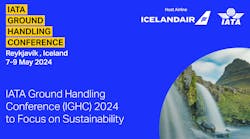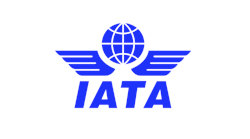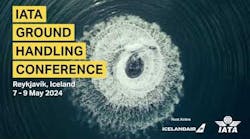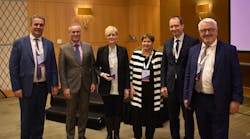This 52nd edition of the International Paris Air Show held from 19-25th June at Le Bourget airport just north of downtown Paris was a "different" edition of the venerable event. The big players in the civil and the military world were reluctant to announce big news prior to the show and on its first days and it initially felt that the show may disappoint, but during the week the mood almost radically improved. Most observers including us were by the end of the show surprised with the result.
Now, after the doors of the airshow have closed we can definitively say the 52nd edition of the Paris Air Show was somehow different. Even being sold-out months before it began, according to the organizers, the mood before the doors opened for the trade visitors was really not the best. Since years, even decades prior, big players on the aviation market usually tend to excite us with big expectations before the show began. This edition was not like the booming 2015 edition, but the final number of airliner orders and commitments throughout the week picked up and surprised many of those who had been expecting a slower show.
So, what caused this uncommon mood? There are many factors that appear to have caused the expectations to be low prior to the event: Unanswered questions related to Brexit; there is from the European perspective a new unpredictable U.S. administration; conflicts across the Middle East; saber rattling in Asia-Pacific; and last but not least terrorism threats in Europe. Those are all important factors that pushed the expectations to be on a low side, but on the other side commercial air travel is still growing at a rate of 8 percent a year. Two factors obscured the predictions heavily in the last moments of the show: Terrorism threats and the weather.
Safety was increased to never previously seen high levels in Paris. Subjectively felt, every intersection and all public places as the whole transport infrastructure in Paris were monitored by an army of visible and invisible security personnel. And you had to pass multiple security checks at the entrance gate of the show. Garnish these safety measures with full trains, packed buses, and the heat wave that flushed Paris and mid Europe with temperatures close to 40 C/100 F, show visitors came close to the limit of exhaustion around noon.
Another Successful Show
Despite all this, the 52nd Paris Air Show was a success, with lots of innovations and a new record of orders which came pretty late in the week creating the "weak" and not really well-attended feeling on the initial days. The number of exhibitors had raised by 3 percent reaching 2,381 while the number of visitors dropped by 8 percent to a 322,000 total and we could count 140 aircraft on display. French politicians showed due to respect to the show with 296 official delegations together with the visit of French President of the Republic, Emmanuel Macron and the Prime Minister Edouard Philippe.
The daily airshow was usually opened by demonstration flights of Dassault Aviation’s Rafale, Dassault Aviation’s Falcon 8X, followed by the presentation of the A380, the Patrouille de France, and the Airbus A350-1000/A400M. During the week visitors could witness Lockheed Martin's stealth F-35A in action and other new aircraft from Brazil (Embraer E195-E2, KC-390) Japan (Kawasaki P1, Mitsubishi MRJ) and Turkey (Hurkus, T629 mock-up).
Airbus and Boeing have a truly giant backlog, and the airline market needs many new aircraft. Airbus forecasts a need of 35,000 aircraft and Boeing of 41,030 units for the next 20 years. It seems that finding buyers for airliners in the future will not be a problem, given the manufacturer will have "the" right product. During the show it was difficult to figure out how firm orders were placed but in the end customers did order aircraft.
Paris Air Lab
50,000 visitors were counted at the dedicated, crowded and well-attended Paris Air Lab. Visitors could see their pitches, TED-style talks, bringing the start-up culture of risk and innovation into the Paris show.
The Careers Plane
The French Aerospace Industries Association (GIFAS) offered an area dedicated to careers, employment and training in the aerospace industry, air transport and national defense. During the show 55,000 visitors walked through this area which was divided in two sections: The Careers Plane, an area for demonstration and dialogue coordinated by professionals in the sector and the Jobs and Training Forum, a space for meeting recruitment managers from companies and training schools.
XTI Aircraft
The American XTI Aircraft Company and its CEO Robert LaBelle gave interesting insights in its TriFan project. According to LaBelle the six-seat airplane will have the speed, range, and comfort of a business jet and the ability to take off and land vertically, like a helicopter. The three swiveling fans driven by twin Siemens e-motors will be powered by a dislocated turbine/generator unit.
AeroMobil
The Slovakian AeroMobil showcased the brand new flying-car with the price tag of approx. $1,200,000 USD. The two-seat, all composite vehicle is powered by a non-disclosed automotive turbo engine and features unconventional front suspension which is adjustable in height and axle track.
Boeing
Boeing's new 737 MAX 10 was launched at the show, boosting the final count of Boeing orders and commitments to 571 aircraft. Boeing signed an agreement with an unidentified major airline customer for 125 737 MAX 8 airplanes, valued at more than $14 billion at list prices. Boeing revealed its 2017 Current Market Outlook, and also forecasts significant growth in the Aerospace Services Market, projecting $2.6 trillion demand in commercial and government services for the next 10 years.
Airbus
Airbus revealed the A380plus, a more fuel-efficient and high-density seating aircraft meant to spark new interest in its big-bird. At its end-of-show conference, Airbus admitted that it had been a slower air-show than usual for them and that Boeing had won the total Paris orders race. It announced that during the week it had received a total of 326 orders with 144 firm and 186 MoUs. Airbus now has a record backlog of 6,800+ aircraft.
Regional Airliners
Embraer had on display the E195-E2 in a striking bird-like livery with the name Profit Hunter. Bombardier's CS300 and Mitsubishi's MRJ failed to pick up orders during the show. Mitsubishi's press conference prior to the show was a statement that the project and certification is progressing well and that the first MRJ is slated to be delivered to ANA by mid-2020.
Boom
Boom Supersonic unveiled in Paris the completed design of the XB-1 Supersonic Demonstrator, the fighter-like, scale model prototype of the Boom supersonic passenger airliner. The XB-1 is supposed to fly in 2018 and it will, according to Blake Scholl, founder and CEO of Boom Supersonic, be the world’s fastest civil aircraft, and it will demonstrate in flight the key technologies for mainstream supersonic travel. At the press conference it was stated that 76 airplanes were sold to undisclosed clients among which are five major airlines.
GE and the "Atlas" AM machine
GE Additive announced at the Paris Air Show plans to build the world’s largest laser/powder additive manufacturing (AM) machine called Atlas which is being designed for use with multiple materials, including both non-reactive and reactive materials such as aluminum and titanium. Mohammad Ehteshami, vice president and general manager of GE Additive, said that the machine will be built for the aerospace industry, will have a build capacity of approx. 10 cubic feet, and will be suitable for making jet engine structural components and parts for single-aisle aircraft adding that it will be “applicable for manufacturers in the automotive, power and oil-and-gas industries.” The first production models of the machine will be available to customers by end of 2018.
Michelin & Safran
Michelin and Safran presented the world's first "connected" tyre for the aeronautical industry which will be available in 2019. The system, called "PresSense" consists of a battery-less electronic pressure sensor installed in the tyre and of a reader which is connected to a smartphone and then to the maintenance database. PresSense should greatly improve and simplify ground maintenance operations and doesn’t require manual pressure collection through the wheel valve and a manometer.
AFI KLM E&M
Several of the world’s largest MROs were present at Le Bourget. During a press conference Anne Brachet, executive vice president of Air France Industries and KLM Engineering & Maintenance provided their view of the MRO market and commented on competition and opportunity. Brachet expressed optimism about future MRO growth opportunity but cautioned the market is very competitive. Brachet went on to say, “We see pressure on the market from competitors”. AFI KLM E&M also sees opportunity in new platforms such as the Boeing 787 and 737 MAX, the Airbus A350 and A320 NEO, as well as the GEnx engine overhaul opportunities.
MTU Aero Engines
Leaders from MTU Aero Engines invited a select group of journalists to lunch one day and provided a positive industry outlook. MTU used the words MRO readiness to describe the joint venture between them and Lufthansa Technik for work on the Pratt & Whitney Geared Turbo Fan (GTF). MTU executives said they have invested a lot in engine MRO and see revenues up.
Siemens
For the first time in Paris we could see a purely electric aircraft in the daily airshow. The pace of a “greener" and environmentally friendly propulsion is accelerating at remarkable extent. During this show the French Gliding Federation (FFVV), in collaboration with Extra, the German aerobatics airplane manufacturer and Siemens AG, proved that electrically powered flight has become reality in general aviation. The all-electric Extra 330LE aircraft - a Siemens testbed - which is powered by a Siemens 260 kw electric motor that weighs 110 pounds (50kg) and delivers 1,000 Nm of continuous torque, towed silently an aerobatic glider in the le Bourget skies proving the validity of this technology in a daily use.
Workhorse
The American Electric-drive truck manufacturer Workhorse unveiled a hybrid-electric vertical-takeoff-and-landing (eVTOL) aircraft at the Paris Air Show called SureFly. Flight tests are planned to begin this year we could hear in Paris, and the company is aiming the FAA certification for the initially piloted model by 2019. The octocopter, the eight-rotor SureFly builds on Workhorse’s development of the HorseFly delivery drone. The design is reminiscent of the Chinese Ehang 184 drone and is powered by a non-disclosed 200-hp turbocharged combustion engine which drives a generator, and which is back-upped by a dual-battery system. Eight independent e-motors are mounted on four folding arms above the cabin.
The 53rd International Paris - Le Bourget Air Show, will be held from 17–23 June 2019.





